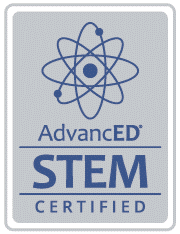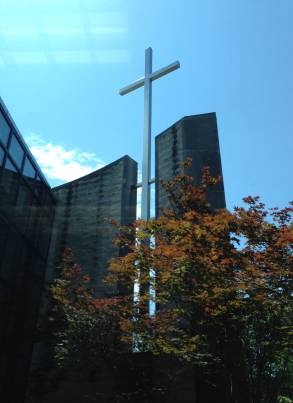Last November, I had the opportunity to participate in the NCSSS (National Consortium of Secondary STEM Schools) conference in New York City. An acronym that contains an acronym? How meta! Rockhurst High School can learn a lot about the successes and challenges experienced by other STEM schools. Ultimately, how can Rockhurst integrate some of these innovative ideas with the non-negotiable Jesuit identity that is paramount in forming men for others?
In my first of a series of posts, I will reflect on the implementation of a freshmen research statistics course at Thomas Jefferson High School for Science & Technology .
TJ requires all freshmen to take a Research Statistics course during their first semester of their freshman year. This course serves two purposes. One, it’s a strategic choice to give the school time to help properly place students in the appropriate math class the following semester (The students are coming from a variety of feeder schools). Secondly, and more importantly, freshmen then learn the following four skills:
- Provide a solid background for future science courses as well as senior lab
- Better understand the implications of real-world quantitative studies and policies
- Teach how to ask the right questions when trying to solve a problem
- Improve students’ communication skills
There are also some secondary goals:
- Teaching freshmen better study skills
- Improving organizational skills via weekly notebook checks
- Providing a framework for students to learn mathematics and statistics using a hands-on approach
In terms of actual statistics content, the curriculum covers:
- Summarizing data and looking at distributions
- Significance, confidence intervals, and comparisons
- Experimental design, sampling, drawing conclusions
- Correlation and regression
Statistics is becoming more and more important in today’s world. Some even suggest that it is more important than Calculus.
Traditionally, the existing secondary mathematics track aimed to produce as many engineers as possible. While their still exists a dearth in the engineering workforce, data science and business intelligence also compete as major players in today’s STEM marketplace. Some universities are even building entire Data Science buildings.
How do we support and create opportunities for all of our students? Can we have our cake and eat it too?
My dream would be for every Rockhurst senior to take either AP Calculus or AP Statistics. Not all of our students want to be engineers, and that is ok! However, data analytics impact all fields and the more we can support our students with skills in data analysis, the better we support them for their future. Furthermore, the new SAT of 2016 claims three specific foci, one of which being data analysis.
Turning this reflection into action provides some difficult challenges. How do we vertically align our mathematics curriculum to support both calculus and statistics? How do inject some of these statistical practices into our science curriculum? Where does computer science fit in?
So where is Rockhurst right now?
For the 2016-2017 school year, Rockhurst will be offering AP Statistics. This class will count as a math credit; therefore, some students will have the option of taking this course instead of AP Calculus, or Precalculus, or even College Algebra.
The mathematics and science departments are looking into how to use programs such as Microsoft Excel more intentionally in their curriculum. The math department is also studying the degree in which statistics shows up on the SAT exam. The steam team are working with Rockhurst University’s data analysis leadership to learn about how students in higher education learn these emerging fields.
It’s an exciting time in education right now. It will be amazing to see the answers to these questions play out in future high school classrooms.




Comments